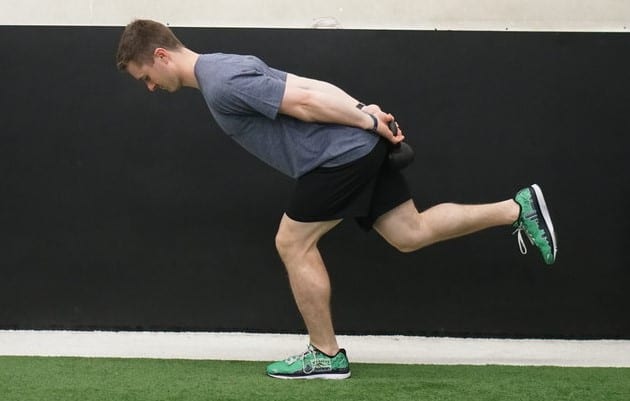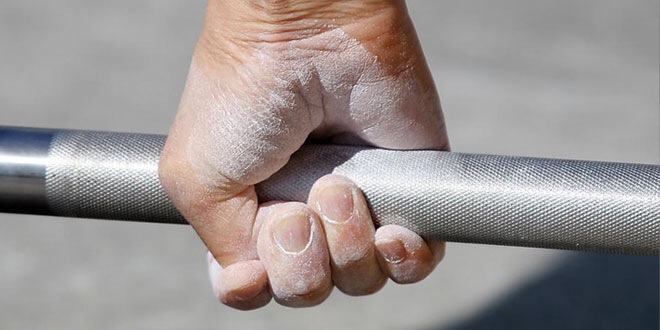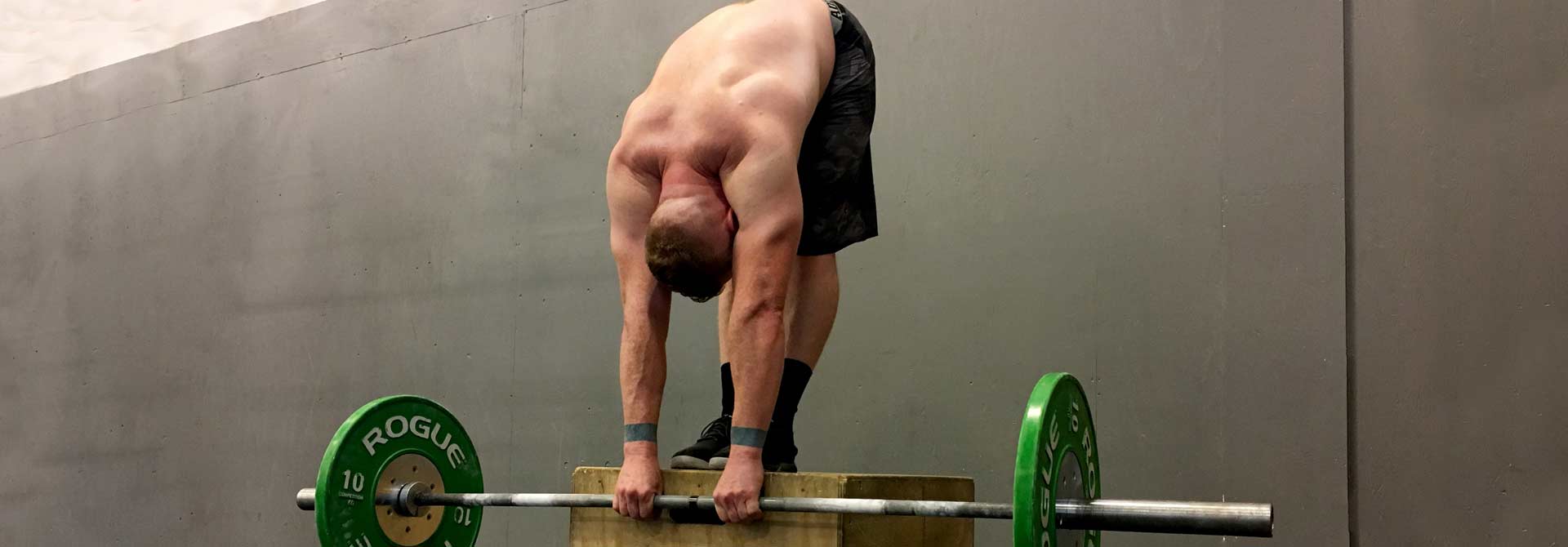The deadlift is an exercise that’s explicitly made effective with heavy weight, and there are few true deadlift alternatives. Heavy weight, in this case, is relative. I’m probably not alone when I tell you that the conventional or sumo deadlift is an exercise that makes you exert maximal force and not something done for reps without a lot of experience. It’s almost unique in the sense that I’d say it’s safer to teach someone how to deadlift properly with a weight that feels heavy (but not dangerous), before letting them do high-rep sets (once the movement becomes ingrained). Without ingraining the proper movement pattern first, high-rep deadlifts can do more damage due to fatigue and inconsistency than a short set with heavy weight.
This makes deadlift alternatives hard to come by without anything heavy to pick up and put down. As many of us are out of the gym, finding a way to keep that deadlift movement pattern trained while strengthening the muscles that help us lift is key. Squats and pull-ups can help you train your legs and back, but if you want to make sure you’re going to make the most of the current lockdown, you’ll need to train all the other muscles responsible for a good strong pull off the floor. Thankfully, there are a few effective deadlift alternatives – but I have to warn you that none of them will help you retain your deadlifting strength. Instead, they’ll help you isolate muscles that you might’ve neglected in the past or address certain imbalances and improve your overall mobility.
Effective Deadlift Alternatives
To identify useful deadlift alternatives, we must break the deadlift down into its individual parts. Regardless of whether you pull conventional or sumo, the deadlift is a hip hinge primarily. Your knees do bend and extend throughout the movement, and your quads play a significant role in the deadlift in both the sumo and conventional lifts, but the main workhorse here is the hips.
Hip hinges are any movement where you bend over with a neutral spine and minimal knee flexion. Think good mornings, reverse hyperextensions, glute bridges, and deadlifts. There are many ways to load this movement or add resistance to it from a variety of angles through weights, cables, bands, chains, or just gravity. While you won’t be able to replicate a 400-pound deadlift without 400 pounds of resistance, you can utilize a couple of different tools to up the difficulty of the movement and incorporate a useful hip hinge into your program. Here are my “big three” deadlift alternatives:
- Single-leg hip hinge. The single-leg hip hinge is a Romanian deadlift on one leg. Your back leg is extended behind you, in line with your torso. Keep your hips and shoulders square for this one. Weight is optional but recommended once they become easy. Since this is a unilateral exercise, you can make the most of a lighter weight if that’s all you’ve got access to. Just as with a Romanian deadlift, you want to squeeze your glutes at the top of the movement, slow the eccentric, and extend powerfully through the hips in every rep.
- Good mornings. Good mornings are an excellent deadlift accessory in any case, but they’re really useful now because you don’t need nearly as much weight to make them challenging. You also don’t need a barbell. You can lift odd objects onto your back and go for reps. Keep your legs relatively stiff, lean back into your hips, and then extend.
- Standing hip thrust. If you have access to a resistance band, give this exercise a try. Just as it’s described, this is a hip thrust with a band attached to your hips and a pole or bar. Lean back with your hips slowly, then extend through the hips and contract as hard as you can at the “top” of the movement. You can combine these with a kettlebell or dumbbell swing, for kicks.
Strong Glutes, Strong Hams
While I think it’s erroneous to call the deadlift a glute and ham exercise, your glutes and hamstrings are heavily involved in getting your hips to fully extend and lock out. Imbalances in your hamstrings or glutes can lead to trouble down the rest of the kinetic chain, making you more likely to helicopter and eventually miss a lift due to unilateral weakness. You want your hips firing equally on both sides if you care about getting the most out of the deadlift, and these unilateral glute and hamstring exercises can help you work on perfecting the basics over the quarantine period.
- Single-leg glute bridges. Start in a normal glute bridge, then extend one leg. Keep your hips square and do hip thrusts. Keep your legs on an elevated surface or add a little weight/use some bands to make it tougher. I call these bridges rather than thrusts to stress that you should hold the contraction in each rep. If you need to make these easier, do regular glute bridges, or frog pumps.
- Single-leg hip extension. Also called a quadruped hip extension, these are done on all fours with a band, ankle weight, or just nothing. If you can only do bodyweight exercises, these are a good warmup before switching to something with a little more resistance. Get on all fours (hands and knees) and extend one leg backward at the hip. Keep your hips square as best you can and avoid leaning. Hold the contraction of the glutes on each rep.
- Hip abduction and adduction exercises. There are plenty of adduction and abduction exercises, especially with bands. Without bands, your options are greatly limited, but you can still work on leg abduction and adduction. For leg abduction, do slow standing side raises. A goal for beginners is to get a chair and work on slowly raising your leg laterally over the chair and back, for a set of 10-20. Slow fire hydrants also work for beginners. Adduction exercises are slightly more complicated. You can squeeze a basketball between your knees for 10-15 seconds, to begin with, and work towards a side plank with hip adduction.
- Hamstring isolation exercises. I’ve got a writeup on a number of different effective hamstring isolation exercises in my leg calisthenics article, go check them out! The article is also chockful of bodyweight quad exercises.
Erector and Abdominal Exercises
Ideally, deadlifts are performed with no spinal flexion whatsoever. In very specific exceptions, and only if properly trained, a lifter can purposefully flex their upper back (the thoracic portion of the spine) to reduce the range of motion needed to pull the bar into full hip flexion. At that point, the lift needs to be finished by locking out the back. However, in most cases, the erectors and abdominal muscles work hard to keep the spine stiff and stable and avoid all flexion. They’ve got a tough job to do at maximal loads, which is why they need to be really strong. Here are my favorite bodyweight erector and abdominal exercises.
- Hatfield back raises. These are massively underrated, and I almost never see people do them. The idea behind the Hatfield back raise is to contract the erectors and isolate them, like a reverse crunch. To do these, find a bench or chair and lie on your stomach. Try to find something that lets you hang off one edge with your legs and hang off the other edge with your chest and arms. Put your hands behind your head, and focus on contracting your erectors at the top, and stretching them at the bottom. You don’t need much weight to make these tough, so grab anything and hold it behind your head to increase the difficulty of this exercise.
- Reverse hyperextensions. You can do these on a chair, bench, or box. Lie flat with your stomach on an elevated surface with your hips and legs hanging off in the air. Contract your glutes and hams to raise your legs until they’re parallel with the ground. You can use ankle weights or hold something between your feet to make these tougher. They’re a glute exercise, but they’ll also challenge your erectors.
- Reverse planks. Again, a surprising exercise for your back and your abs. This is similar to a back bridge, but with your arms behind you rather than over your head. Do these unilaterally (raise one leg off the ground just slightly) and hold them for time. Focus on squeezing and contracting the muscles in your back and keeping your hips fully extended for 10-30 seconds at a time.
- Heavy/intense planks. When lifting heavy weights, the erectors and abdominals are tasked with stabilizing the body and keeping the spine extended. To reinforce this and learn to brace better (and to activate the abs and prepare them for a heavy lift, when you’re back in the gym), do planks. But don’t just do boring old planks. Do intense planks. Don’t be lazy and try to hold the plank position for a minute or so, aim for sets of 10-20 seconds and focus on squeezing and contracting every single muscle you can. Add weight if you want to – it doesn’t have to be a plate. Ask someone to sit on your hips or place something heavy on your back. Repeat this with side planks.
- Heavy holds/carries. Heavy holds are great anti-flexion exercises, and let you target your weaker side while using less weight. You don’t need a lot of weight to make these challenging if you’re going for time or distance. Pick up whatever you can with one arm and brace and keep an eye on your posture in a mirror to stay honest. If you don’t have much room to walk around with something, just time your holds. If you have access to a resistance band, you can also play around with other unilateral anti-flexion, anti-rotation, and anti-extension exercises by attaching the band to a hook or pole and staying as stiff as a pillar.
- Jefferson curls. These are an Olympic weightlifting staple, and an easy exercise to really mess up. First things first, these are not meant to be done with any sort of serious weight, which makes them great for the quarantine. You need good flexibility to do these, to begin with, so if you can’t touch the floor with your palms while keeping your knees extended, work on your flexibility first. From the bottom position, roll your spine into full extension, slowly. It’s best to attempt these if you’ve been training for a few years and are generally quite strong, even with light weight.
Bands and Broomsticks
If you’re fortunate enough to be the lucky owner of a set of serious resistance bands, then I still implore you to give some of these deadlift alternatives a try. Focus on doing the majority of your bodyweight work with appropriate resistance bands. Stack them together or pick the heaviest ones if they’re starting to feel easy, and program them as you would your weight training sessions.
Instead of just pulling on the bands, why not make your banded training a little more powerlifting-specific with a broomstick or an empty barbell? If you’re like me, and you’ve got a cheap barbell at home with very few plates, then it’s easy to tie a couple of resistance bands around that sucker and stand on them, and go for deadlifts, squats, presses (these are usually really easy at the bottom, so try to find a makeshift bench to tie the bands), and so on.
If you only have light resistance bands, you can increase the range of motion on your pull to make it more challenging. Go for a wide snatch grip (as wide as you can), hold the bands on your makeshift bar, and do stiff-legged Romanian speed pulls for reps. Many of the exercises I’m listing here are made much more effective through bands, and they’re often easier to set up this way than doing the bodyweight alternatives.
The Deadlift Won’t Be Replaced
I don’t have to tell you that all of these exercises won’t replace a good heavy deadlift. However, if you incorporate these deadlift alternatives into your home training program, you’ll make some gains while away from the gym – and the newfound stability and strength might help you hit new PRs once you’re acclimated to the barbell again. Don’t underestimate bodyweight work! It’s not quite like hitting the weight room, but many of these exercises can be humbling. Give my home workout a read if you’re interested.
Want to lift heavier and avoid injuries? 💪🔥
Download our FREE '5-Minute Warm-Up Routine for Maximum Lifting Performance' and get primed for every workout!
Click below to grab your copy now!👇
👉 Download the Free Guide




